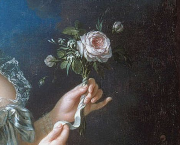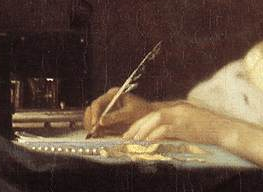From Lazzi to Acrobats : the Court’s Taste after 1680
William S. Brooks
Brooks, William S., "From Lazzi to Acrobats : the Court’s Taste after 1680", dans Cahiers du XVIIe siècle, 1992, vol. VI, 2.
Extrait de l’article
When gestures and movement or physical and visually important devices occur in French comedy, one reason sometimes advanced is the influence of the Italian company, with whom Molière shared a theatre. From the work of the two playwrights who feature in this session, I might take as examples the exaggerated displays of cowardice involving the Marquis (Quinault, La Mère coquette, I, 4 and V, 2), the manteau scene (IV, 3), the hats scene (I, 4), and the “docteur de verre” wrapped in straw, (La Comédie sans comédie, III, 6) ; from Molière, Valère and Maître Jacques crossing and re-crossing the stage (L’Avare, III, 2) ; Harpagon extravagantly searching La Flèche (I, 3) and even himself (IV, 7) and beating Maître Jacques (III, 1) ; La Merluche crashing into Harpagon and knocking him over (III, 9) ; the antics of Argan with his stick (Le Malade imaginaire, passim), and so on. There is a distinction, however, between, on the one hand, such gestures which catalyse the humour, and, on the other, dramatically gratuitous visual action which amuses by its spectacular nature alone. Such action is likewise associated with Scaramouche and his company, including, especially, the acrobatic Biancolelli in the role of Arlequin. Pre-planned comic routines called lazzi could be incorporated anywhere in almost any play. Within the main narrative based on a plot idea called a canevas, these lazzi would be, perhaps arbitrarily, included.
Lire la suite (Société d’études pluridisciplinaires du dix-septième français)




